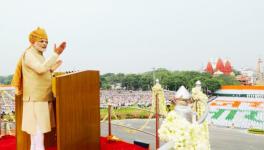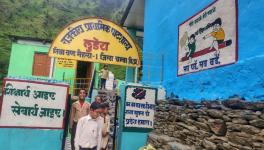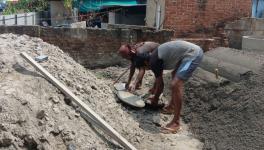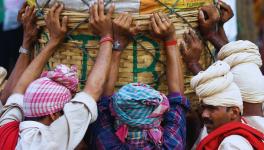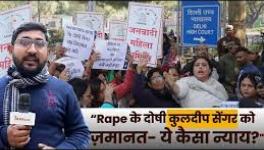GST Will Implode States; Himachal is Already Feeling the Heat
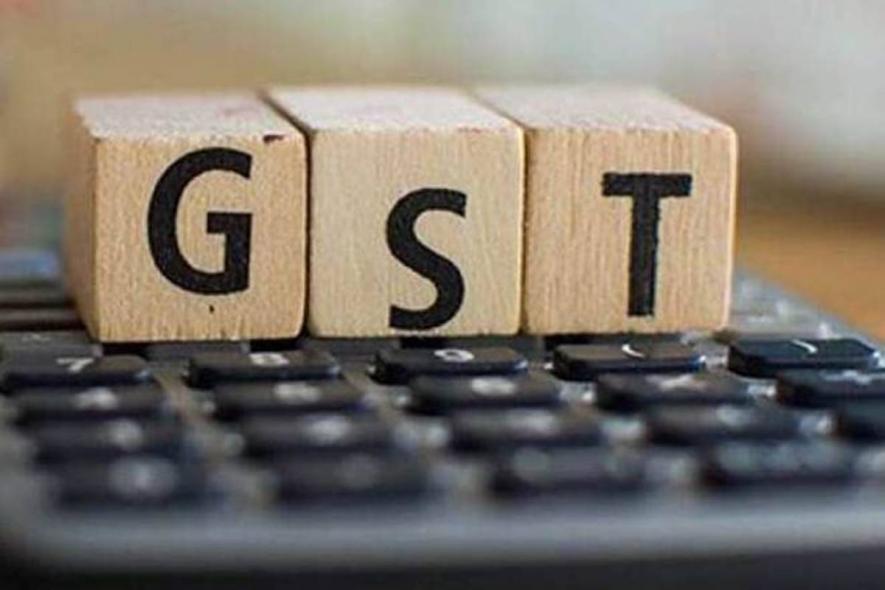
Image Courtesy: The Financial Express
Now that the government of India has decided not to compensate the states owing to the shortfall in revenue collection of GST (goods and services tax), it is all the more clear that some smaller states would face the harshest brunt. Though the Central government is bound to pay for the losses, as it is a constitutional obligation under the GST Act, undermining the constitutional provisions is no big deal for the ruling Bharatiya Janata Party (BJP).
The obvious reason cited for non-payment of compensation is fall in the collection of GST. However, when GST was introduced in the country and the powers of the state governments to levy indirect taxes were usurped by the Centre, one of the promises made to the states was that they would be adequately compensated till 2020 with an increase of 14% over the estimated revenue collections.
Now, in a situation where GST revenues have fallen to Rs 2.35 lakh crore, the best way to compensate the states would have been to borrow money and pay the promised dues. However, Finance Minister Nirmala Sitharaman refused to transfer this money to states, and asked the states to borrow instead.
It is important to look into what such a step means for a small, hilly state like Himachal Pradesh, whose major assets are nationalised and the main sources of revenue have been taken over by the Centre -- these are the state’s forests and hydropower generation.
IMPACT ON HIMACHAL
Himachal Pradesh has already started feeling the heat of this decision. Even the state minister (BJP) in the GST Council had asked the Centre to compensate the state adequately.
The option of borrowing placed by the Centre is not only erroneous but also disastrous for a small state like Himachal Pradesh. The total liabilities of the state, including public debt and other obligations, have soared past Rs 50,000 crore (Rs 50,772.88 crore). With such a huge debt burden, further borrowing either from the Reserve Bank of India (RBI) or from the market would turn the state into a mere adjunct of the financial institutions.
There are numerous stories on the relationship between money lenders and recipients and invariably in all of them, the debtor is ruined. Shakespeare’s play, The Merchant of Venice, is a vivid reminder of the reality of a debt trap. These neo-merchants, who are advising the states to borrow, should realise that once caught in a debt trap, the states would never be able to come out.
Let us look into the actual situation in Himachal Pradesh and how it may impact people. After the shift from VAT (value added tax) to GST, Himachal had projected a revenue generation of Rs 3,855.14 crore for 2020-21. This amounts to almost 42.41% of the total tax revenue to the state. In the absence of this transfer from the Centre and in a situation where the transfer has not been made since March, the fiscal health of the state would be seriously impacted.
The other major revenue sources that the state envisioned in the budget proposal are from excise duty, mainly on the sale of liquor, and VAT. This amounts to Rs 1,625.37 crore (19.67%) and Rs 1,491.39 crore (18.54%), respectively for excise and VAT.
There has been a massive shortfall in all these three heads of the state’s own revenue--state GST, excise and VAT--due to the unilateral lockdown announced in the country since March 25 this year.
The hospitality industry, one of the major sectors contributing to excise, lies shattered. Similarly, VAT revenues fell considerably. Production of cement and sale of cars are the only two sectors that contribute to the state’s GST. However, owing to the lockdown, there was little demand for cement as well. From March to June, there was hardly any revenue even from these two sectors. It is only in July and August that nearly Rs 300 crore per month GST was generated in the state.
A state with a huge liability could survive with a revenue deficit grant as per the 15th Finance Commission, which is also going to end this year. This amounts to nearly Rs 11,400 crore.
“This is a grave situation,” said a retired bureaucrat, who was handling the financial department in the state government for a long period. The salary component liability in the state for 2020-21 is Rs 44,545.05 crore, along with pensions of Rs 7,266 crore and the interest payment on loans borrowed amounting to Rs 4,931.92 crore. These three combined constitute 51.49% of the total expenditure in the state—salaries make up 26.66%, pensions 14.79% and interest payments 10.04%.
The total debt has already reached 42% of the state’s gross domestic product or GSDP and the projected GSDP of Rs 1,82,020 crore looks unachievable.
Agriculture in the previous year showed a negative growth of 4% and the major sector contributing to the growth of the state’s economy was services, which too has been severely hit. There is currently an estimated shortfall of nearly 20% in revenue earnings of the state for 2020-21.
The fiscal deficit was estimated to rise from the budgeted 4.35% to 6.42% of the GSDP, and if the state is asked to borrow more, it would make the situation worse. The state may have to borrow nearly Rs 5,000 crore to ensure that it is at least able to disburse the salaries of its employees on time. Already a few departments, like tourism and transport, have been unable to pay salaries for the last three to four months.
Who is going to pay for the huge debt that the state is accruing? Or will the state government one fine day say that it is ready to cut the salaries of its employees by a certain percentage, as it is unable to disburse these?
The challenges faced by Himachal Pradesh are clearly beyond its capacity to resolve. Instead of blindly accepting the firmans of the Centre, the BJP-led state government should vociferously raise its voice, and akin to the past, must demand 'special category status'.
Along with other states like Kerala, Rajasthan, and Maharashtra, Himachal Pradesh should also raise its voice against the Centre’s GST dictum and it to act according to the Act. It should remember that the government in office is a mere custodian of the rights of the state and its interests are the people. Governments come and go; the interests of the state and its people are supreme.
(Note: Figures mentioned in the story are from Himachal Pradesh’s Economic Survey and the state budget of 2020-21.)
The writer is former Deputy Mayor of Shimla, Himachal Pradesh. The views are personal.
Get the latest reports & analysis with people's perspective on Protests, movements & deep analytical videos, discussions of the current affairs in your Telegram app. Subscribe to NewsClick's Telegram channel & get Real-Time updates on stories, as they get published on our website.











